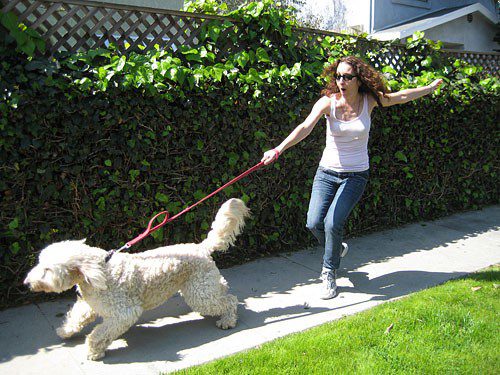
Waa maxay sababta uu eeygu u addeeci waayo milkiilaha
Some owners complain that their dogs are “insolent” and do not obey them “out of harm.” However, dogs have been selected for thousands of years on the principle of loyalty to a person and the desire to cooperate with him, so that neither “harmfulness” nor “attempts to heysta‘ is definitely not the case here. Why does the dog not obey the owner and how to teach the dog to obey?
Sawirka: pixabay.com
Why does the dog not obey the owner?
Certainly not because it seeks to enslave humanity and seize world domination. The reasons why the dog does not obey the owner, as a rule, are divided into 4 groups:
- The dog is not feeling well. So if you notice your dog is having trouble concentrating, is lethargic, lethargic, or refuses to perform certain actions (such as sitting or lying down), it’s worth making sure he’s not in pain.
- Dog can’t take in information. Perhaps there are too many distractions around, the dog is overexcited, or some of its basic needs are not being met. For example, if a dog is not walked much, on a walk it will pull on the leash and be distracted by any stimulus simply because the freedom to carry out species-typical behavior is not satisfied. And if the dog is very hungry or thirsty, he will be able to think only about where to find food or water, and not about how straight he should sit next to you. By the way, it is with this group of reasons that the dog, which does everything so well in a familiar environment, is lost at the first competitions.
- Not enough motivation. For example, when training a dog, the owner relies only on mechanical influences and does not encourage the dog enough. As a result, it often happens that the dog obeys on a leash, but as soon as it is released “into free swimming”, contact with the owner and control over the dog abruptly disappear. This state of affairs is facilitated by cruel training methods, the use of inhumane ammunition, or an incorrect assessment of what the dog wants at the moment and what can be encouraged.
- The man is incomprehensible to the dog, that is, poorly explained. For example, it gives inaccurate or contradictory signals, makes fussy movements that confuse the dog, and the commands sound something like this: “No, well, don’t you understand, don’t sit, but lie down, I said!”
Sawirka: pixabay.com
Maxaa la sameeyaa haddii eeygu aanu adeecin milkiilaha?
First of all, it is necessary to find the reason why the dog does not obey the owner, and this is definitely not “harmful” or “attempts to dominate”. And then it is worth working directly with the cause, that is, most often with the person.
If the dog does not feel well, it is necessary to cure it, and then train.
If motivation is not enough, think about what will please the dog (and not just the owner) and please it, choose the right reward, strengthen contact and mutual understanding, make training a favorite pastime, not hard labor.
You should not set too difficult tasks for the dog, it is better to increase the complexity gradually and break the task into segments that are understandable to the pet.
Of course, it is necessary to provide for the basic needs of the dog.
If the dog is overexcited, it is important to work with her condition, reduce the level of arousal, teach impulse control and the ability to “keep yourself in paws.” For this, a huge number of games and exercises have been developed.
And, of course, you need to learn how to correctly explain the task to the dog, to master your own body language and speech. That is why it is very useful to film the process of training a dog on video and at least from time to time use the services of an instructor – many mistakes are visible from the outside, which the owner, concentrating on the actions of the dog, and not on his own, involuntarily overlooks.
Waxa kale oo aad xiiseyn kartaa: Sidee looga joojin karaa eyga inuu wax ruugo?





